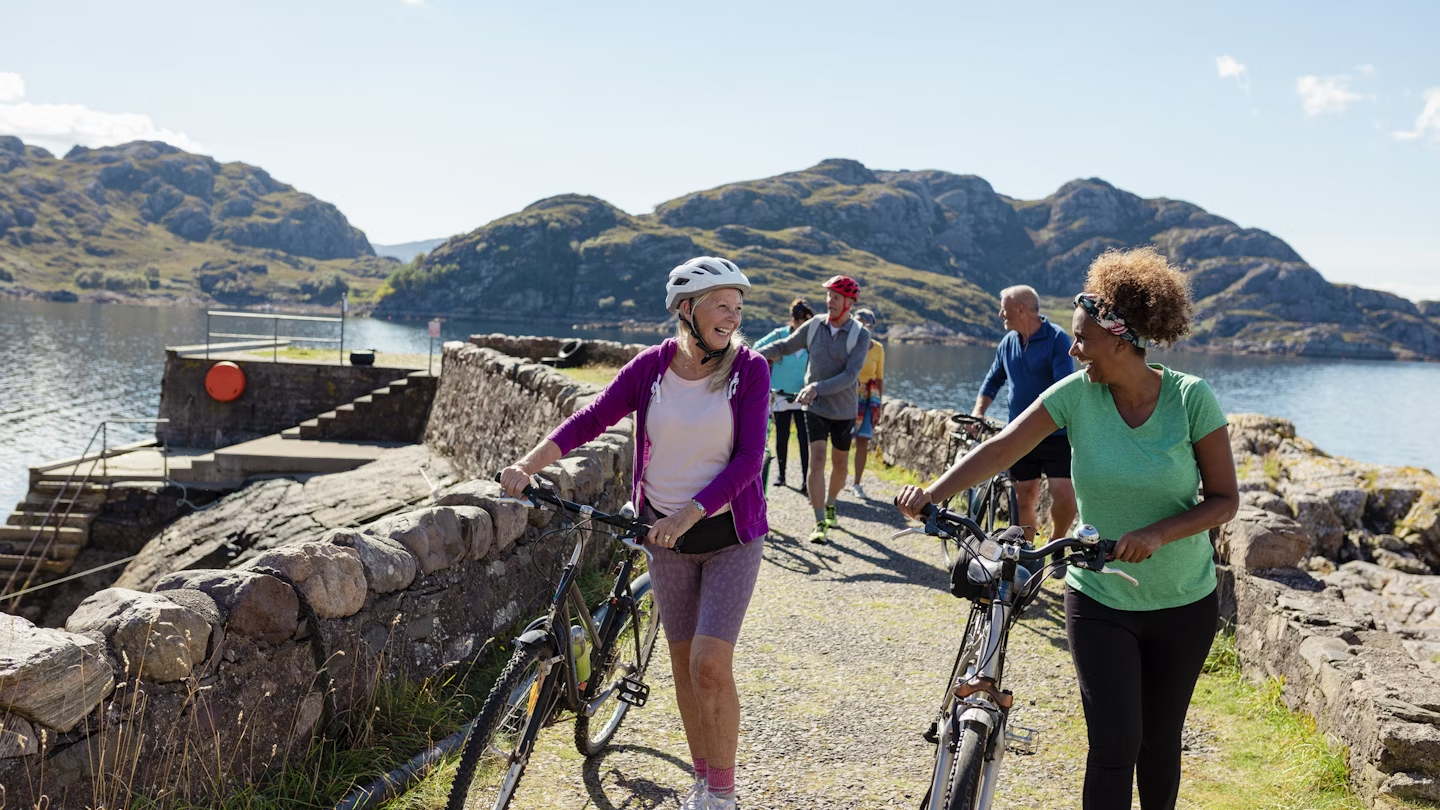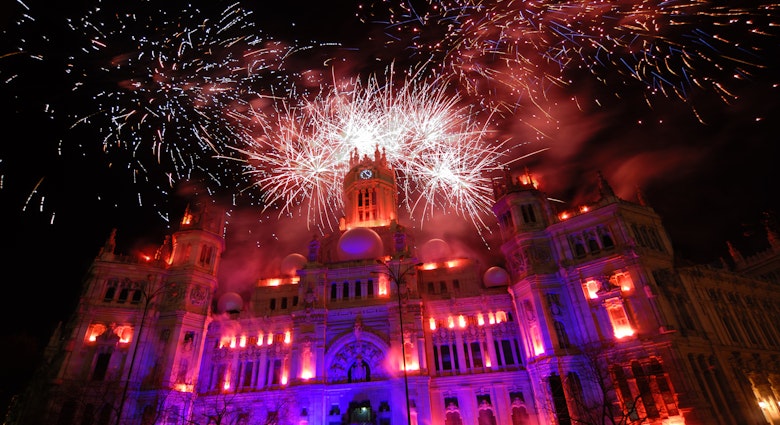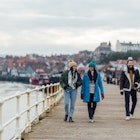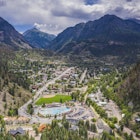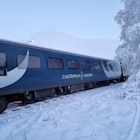With historic yet buzzing cities, remarkable wildlife, the epic landscape of the Highlands and more than 800 islands, Scotland is a dream destination.
The blustery North Atlantic weather that rolls onto the country’s shores (amazingly, Scotland contains more than 10% of Europe’s total coastline) makes the weather hard to predict, but it does fall into distinct seasons. Indeed, Scotland is more seasonal than many other European destinations, so it pays to consider the best time to visit before your trip.
Summer brings festivals – Edinburgh’s world-famous one comes to mind – and long, light-filled nights. Winter, on the other hand, is a cozy time of wilder weather and whisky-warmed cozy nights inside, yet also the best time to stargaze and see the Northern Lights. Savvy visitors arrive during the shoulder season, with its dry weather and cheaper prices. Savor a dram as you consider the best times to visit Scotland.
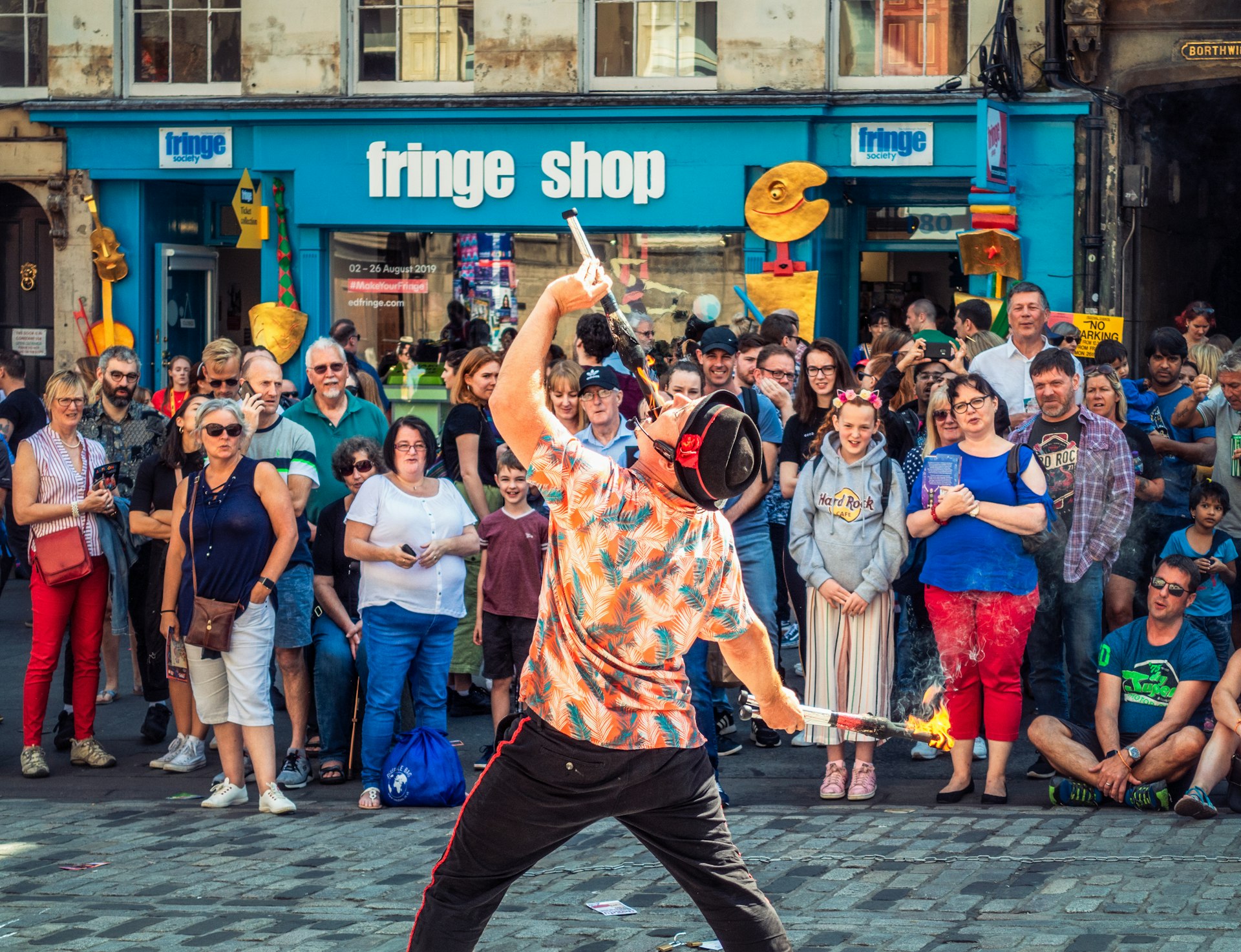
July and August are the best time for festivals
Scotland’s social calendar fills up in summer. School holidays kick off in July, as does the busiest time of year for Scottish tourism. It’s high season for bird-watchers as well, and the best time to visit Shetland’s 100 islands and Orkney’s 80. It stays light late in Orkney, while darkness is practically non-existent in far-north Shetland’s “simmer dim” (the island’s summer-evening twilight). And there are no west coast midges. It’s a great time to visit the Outer Hebrides too, and take in the biggest festival there, “Heb Celt.”
Edinburgh becomes the cultural epicenter throughout August, with myriad festivals, ceilidhs, whisky extravaganzas and more taking place all over the mainland and islands, as locals and visitors enjoy the long northern summer nights. The program is actually closer to half a dozen festivals than one single event, so book travel and accommodation well in advance. This is the peak month for sighting minke and killer whales on the west coast, with the basking sharks arriving to join the bountiful dolphins.
If you’re looking to get outside, expect warm weather but also some rain (pack the waterproofs). Alas, the midges are at their worst on the west coast just in time for high season.
May, June and September give you sunshine without the crowds
Many Scots rate May as the best month: long days, rising temperatures, dry weather...and no midges. Wildflowers are in bloom on the Hebridean machair, hawthorn hedges flower and cherry blossoms grace city parks. Celebrate whisky on Islay at its brilliant festival, or swish your kilt at the first big Highland Games of the season.
June evenings bring daylight till 11pm – even later in the Northern Isles – giving you endless time to explore. Border towns are strung with bunting to mark gala days and the deeply historic Common Ridings; it’s the best time to be in border country. The gannets and puffins are back, so visit the cute birds on a cruise to Bass Rock.
September brings the end of the school holidays, the midges are dying off, wild brambles are ripe for picking in the hedgerows, and the weather is often dry and mild – an excellent time of year for outdoor pursuits. Aviemore and Fort William are the best adventure-sports hotspots.
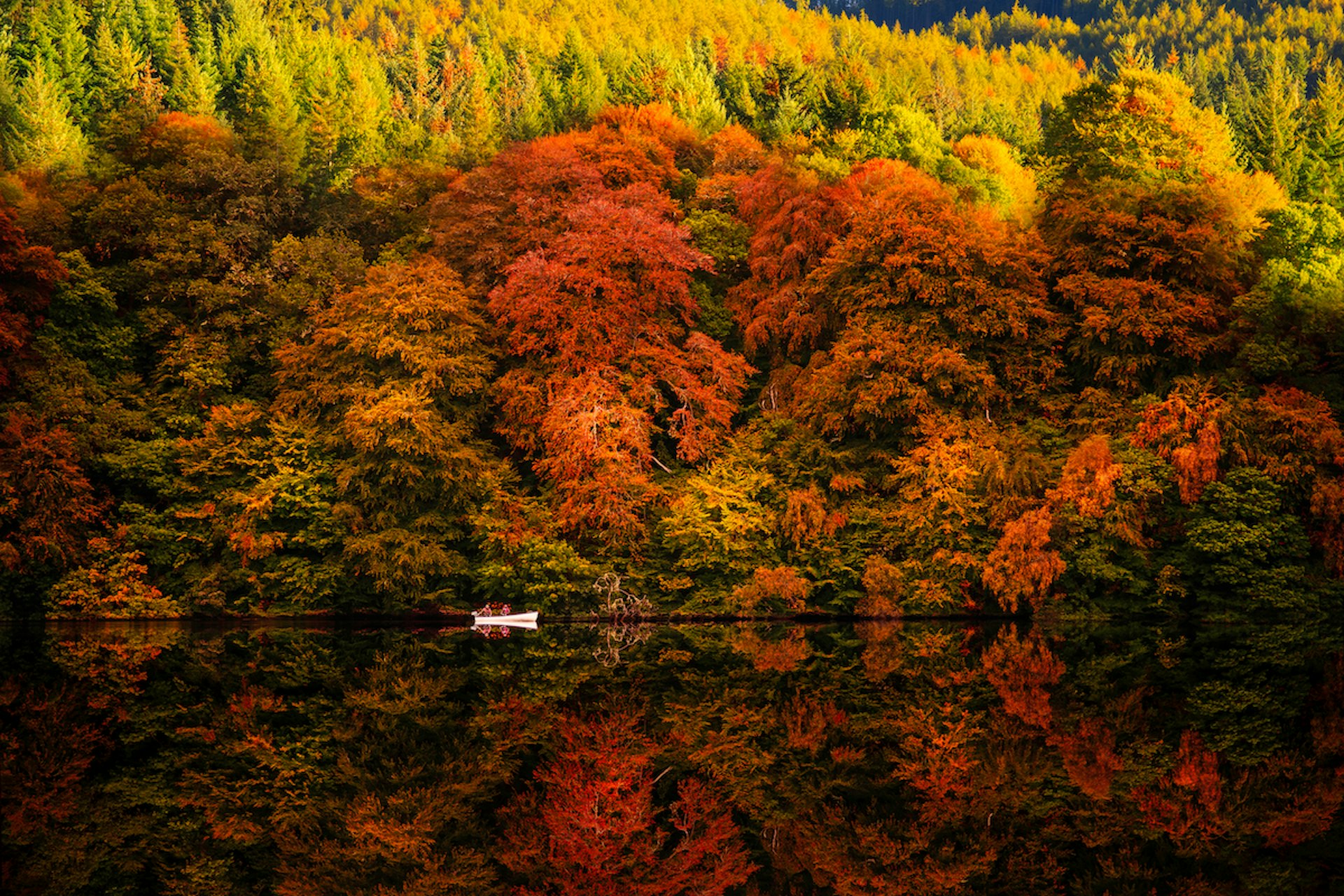
October to April is the perfect time for Northern Lights and cozy nights
From mid-October to March, the weather can be cold and wet, though the influence of the Gulf Stream keeps temperatures from plunging as low as you’d expect at this latitude. Snow rarely lasts for long, except in the mountains.
October sees the trees put on their autumn show, with Highland Perthshire and the Trossachs great places to savor their fiery reds, deep oranges and rich gold hues. The tourist season winds down, and thoughts turn to log fires and malt whiskies in country-house hotels. The Enchanted Forest takes advantage of the dark evenings with its festive sound and light festival and the Royal National Mod celebrates all aspects of Gaelic language and culture.
The days may be getting shorter in November, but this is a fine time to explore galleries and pubs in Scotland’s vibrant cities. And for seeing Scotland’s “Big Five” wildlife before the red deer head high into the hills; the other four are harbor seals, otters, golden eagles and red squirrels, with Arran the only island boasting all five. St Andrew’s Day is celebrated across the Scottish nation. Christmas events and markets kick off in Edinburgh and Glasgow.
December's dark afternoons and often cold and wet weather is relieved by seasonal festivities. There is nothing quite like Hogmanay (New Year) in Scotland, as the capital boasts a huge street party on the big night, plus days filled with festivities. Fire festivals swirl around Comrie and Stonehaven, with myriad events dotted around the country. Come ready to party (and reserve your accommodations well in advance).
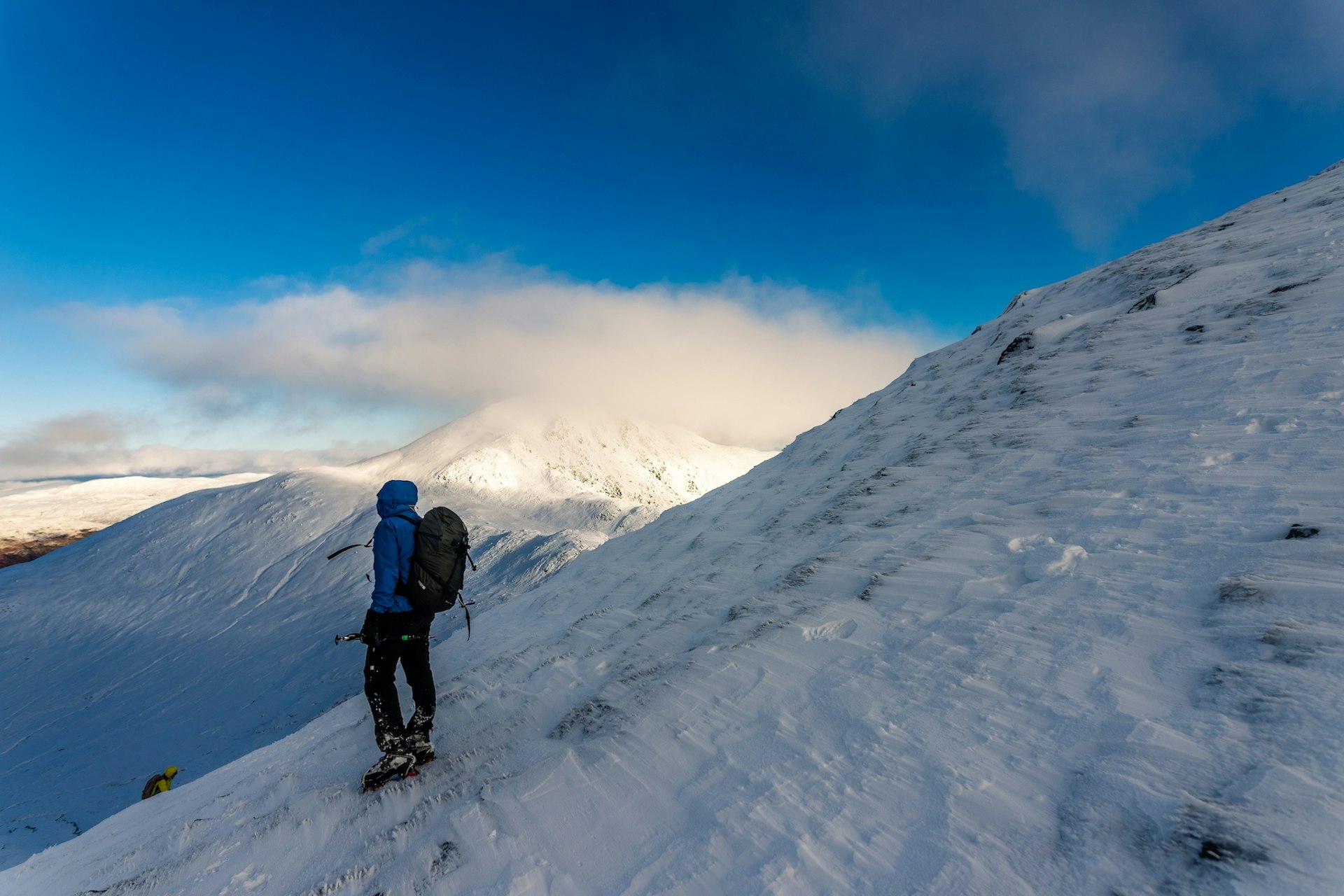
Scotland shakes off its Hogmanay hangover in January and gets back to work (a day later than the rest of the UK, on January 3), but only after taking a dip in the sea in places like South Queensferry and Broughty Ferry on New Year’s Day. Then Burns Night comes along with events across Scotland. It’s cold and dark, making January the best time for stargazing and searching for the Northern Lights.
February is the coldest month of the year and is usually the best for adrenaline-pumping winter mountaineering and ice climbing. You can ski and snowboard across the country’s half-dozen ski resorts, too. The days are getting longer, the much anticipated Six Nations Rugby Tournament kicks off, and snowdrops begin to bloom.
March can be a quiet month in Scotland, but as the weather improves, spring is on the horizon. Laughter is in the air with Glasgow’s comedy festival, while its annual film festival continues the cultural vibe in Scotland’s largest city. The bluebells explode into bloom across the country in April, as the woods on the shores of Loch Lomond come into flower and the ospreys return to their Loch Garten nests.
The weather is improving, and the days are getting longer. Music flows through the streets at the Shetland Folk Festival, and rugby players take to the field in Melrose in the Borders at the world’s oldest Sevens tournament.

